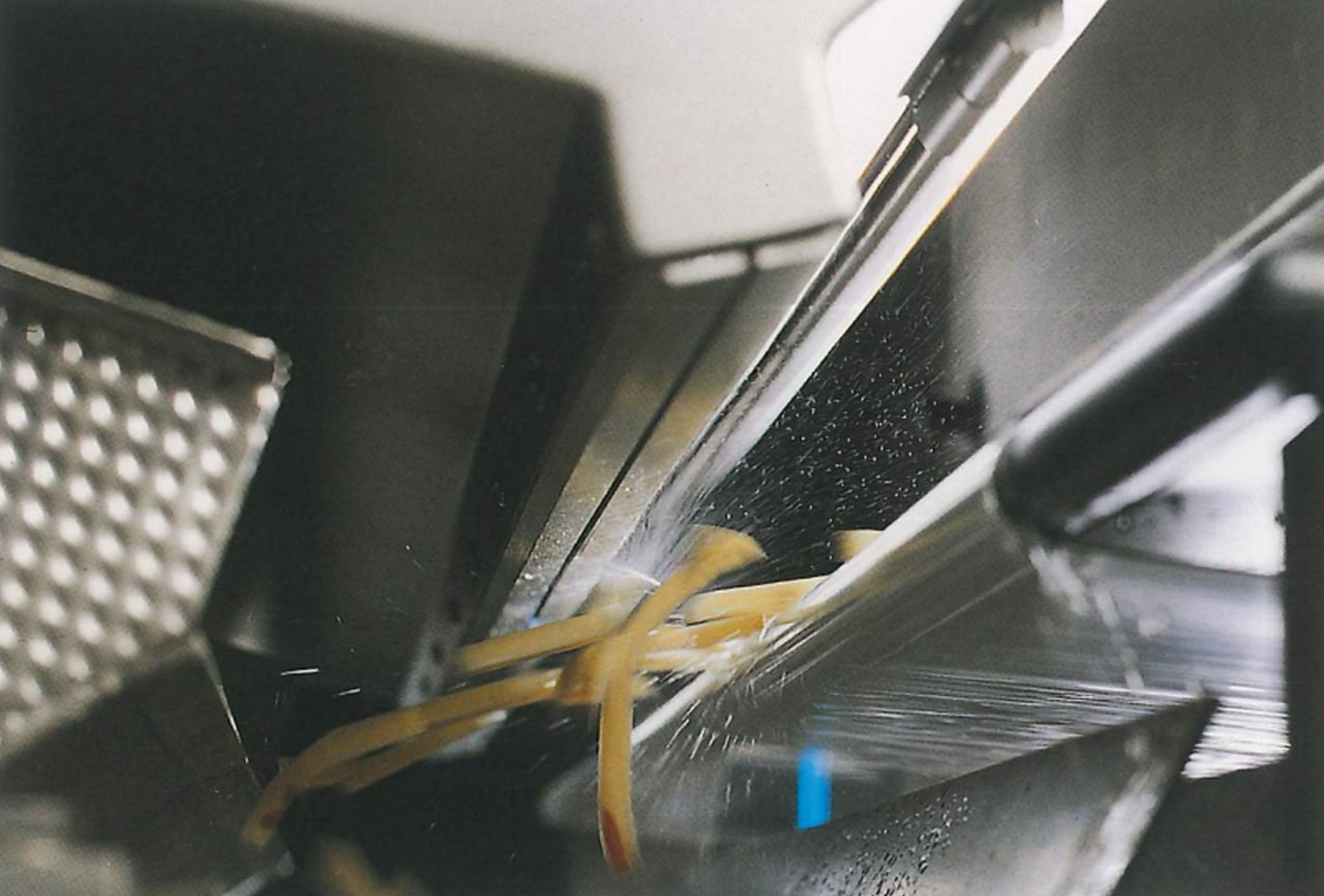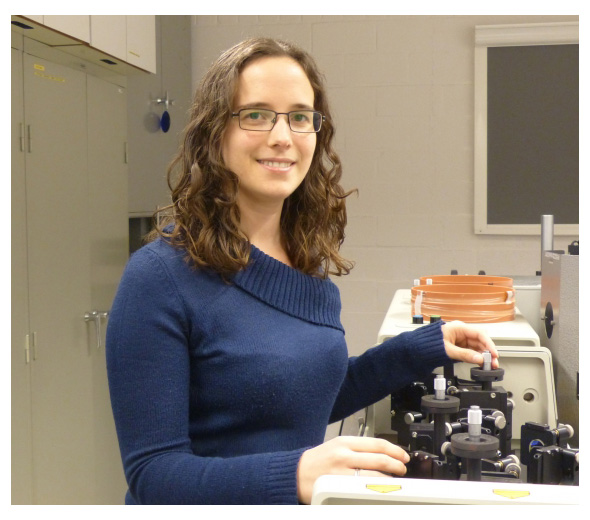Laser scanner ensures you'll never eat toxic fries again
Amid growing concern about the discovery of cancer-causing chemicals in crisps and French fries, a young scientist has developed a new laser system that scans peeled potatoes in the factory to detect toxic compounds and prevent them from reaching the consumer. Earlier this year, the Food Standards Agency (FSA) issued warnings about eating over-fried potatoes, burnt toast and crisps that can contain cancer-causing chemicals such as acrylamide, deeming them a serious health threat to billions of consumers.
At present, raw potatoes that produce an excess of the carcinogenic chemical acrylamide cannot be detected in a fast, sensitive, and non-destructive way.
This new technique developed by Lien Smeesters, 28, at the B-PHOT Brussels Photonics Team at the University of Brussels, in collaboration with Tomra Sorting Solutions, employs a new sensor that scans peeled potatoes, weeding out food that may cause high levels of the toxic chemical.
Currently only general quality tests are available for assessing potatoes with no accurate acrylamide detection. Food safety measures involve a person examining a sample and accepting an entire batch if the small selection passes. However, with this new sensor, every potato or individual French fry can be examined in a rapid, safe and thorough manner for the first time.
Every potato scanned
It works by scanning the ‘free falling’ food items, such as potatoes, from both the front and back with a laser that employs ‘spatially resolved spectroscopy’, a non-invasive imaging technique using infrared light.
When the laser beam hits a potato, part of the light will be internally scatted during interaction with the tissue. A bad potato produces a deviating internal scattering signal, owing to the high acrylamide precursors, and therefore the system can recognise a 'fingerprint' of the undesirable food'.

This unwanted food item is spotted in mid-air as it begins to fall. Selected by the internal processor, the potato is then ‘knocked out’ of the batch by being blasted with a stream of air and into a reject bin before it hits the conveyor belt below.
The sensor is able to do this with each and every individual potato scanning and rejecting in tiny fractions of a second. Dr Smeesters explained: “Not all potatoes result in excessive acrylamide formation during frying. We have sought to spot the undesirable potatoes when they are in their raw, peeled stage. After scanning with laser beams, the good potatoes will emit a different light signal than the unsuited ones leading to an unambiguous detection.”
Having filed a patent describing the use of this detection method, the laser scanner will be integrated into one of Tomra’s industrial in-line sorting machines, detecting and discarding food items that may contain excessive acrylamide precursors.
Several tons of products could be examined per hour to look for these carcinogenic compounds without using dyes or chemical additives, and without damaging or even touching the food.
 Lien Smeesters – Photonics21 Student Award Winner
Lien Smeesters – Photonics21 Student Award Winner
The driving force behind the detection method, Dr Lien Smeesters (pictured), 28, post-doctoral researcher at the University in Brussels in the B-PHOT Brussels Photonics Team and recent winner of the Student Innovation Award at the Photonics Public Private Partnership Annual Meeting, describes the motivation for the project: “When frying potatoes, acrylamide formation is one of the biggest concerns of the potato-processing agriculture industry. At present raw potatoes that produce an excess of acrylamide cannot be detected in a fast, sensitive and non-destructive way.
“Therefore, we have worked with Tomra Sorting Solutions to develop a spatially-resolved spectroscopic sensor that identifies raw potatoes with high acrylamide precursor concentrations, on basis of their internal scattering properties, in miliseconds.”
Smeesters’ development comes at a time where tougher acrylamide regulation has been called for by the sustainability group ‘Changing Markets Foundation’ as well as the recent ‘Go for Gold’ campaign by the Food Standards Agency, helping people understand how to minimise exposure to acrylamide when cooking at home.
“With so many products containing worrying levels of acrylamide above the EU Indicative Value guidelines, we had to take action. This research and collaboration will hopefully provide unprecedented levels of food safety for millions,” Smeesters said.
Future home use
Smeesters sees the future benefits of this sensor being more widely available to users in the kitchen: “Although we are a long way off this yet, the miniaturisation of the technology would enable a compact potato quality test tool in your home. A hand-held device indicating whether a potato would be unsuited for frying could reduce our exposure to acrylamide.
“We hope that potatoes unsuited for frying or roasting can be removed from the food chain right up to the end point, at the user level.
“One day we envisage a world where toxic French fries will be a thing of the past!"










